As a homeowner, it’s essential to understand the common causes of roof leaks and to be able to identify the vulnerable areas of your roof. Knowing which parts of your roof are most likely to experience leaks can help you take proactive measures to prevent leaks before they occur and avoid costly repairs down the line.
Roof leaks can cause significant damage to your home, from water damage to structural issues. That’s why it’s crucial to understand what part of the roof is most likely to leak and what causes these leaks in the first place.
Some of the common causes of roof leaks include damaged or missing shingles, faulty flashing, and improper installation. These issues can cause water to penetrate your roof and lead to leaks, which can result in damage to your ceilings, walls, and flooring.
Key Takeaways
- Understanding the vulnerable areas of your roof is essential for preventing leaks.
- Common causes of roof leaks include damaged shingles, faulty flashing, and improper installation.
- Identifying and addressing leaks promptly can help prevent costly repairs.
Common Causes of Roof Leaks
Roof leaks can be a homeowner’s nightmare, leading to costly repairs and potential damage to your home’s interior. Knowing the common causes of roof leaks can help you identify and address issues before they become major problems.
One of the main causes of a leaking roof is damaged or missing shingles. Over time, shingles can become worn or cracked, allowing water to penetrate your roof’s surface. This can also occur during severe weather events, such as high winds or hailstorms. Regular roof inspections can help identify these issues early, allowing for prompt repair.
Faulty flashing is another common cause of roof leaks. Flashing is the metal or plastic material that seals the seams and edges of your roof, preventing water from entering. If the flashing is improperly installed or becomes damaged, water can penetrate these areas and cause a leak. Regular roof maintenance can help identify and address flashing issues before they lead to significant damage.
Improper installation is another common cause of roof leaks. This can occur when your roof is initially installed or during a re-roofing project. If your roof is not installed correctly, it can lead to issues such as poor ventilation, inadequate flashing, or a lack of proper underlayment. These issues can result in water infiltration and potential leaks. Hiring a reputable professional for roofing installations and repairs can help ensure proper installation.
Regular roof maintenance, including inspections and repairs, can help prevent roof leaks. If you suspect your roof is leaking, it’s essential to address the issue promptly. Delaying repairs can lead to more significant damage and increased repair costs.
To detect a roof leak, look for signs such as water stains on your ceiling, mold growth, or a musty odor in your home. If you suspect a roof leak, it’s crucial to hire a professional for proper detection and repair. DIY repairs can lead to further damage and may not address the root cause of the issue.
By addressing common causes of roof leaks proactively, you can protect your home and mitigate potential damage. Regular roof maintenance, prompt repairs, and hiring a professional for installations and repairs can help prevent costly leaks and ensure your roof is in good condition for years to come.
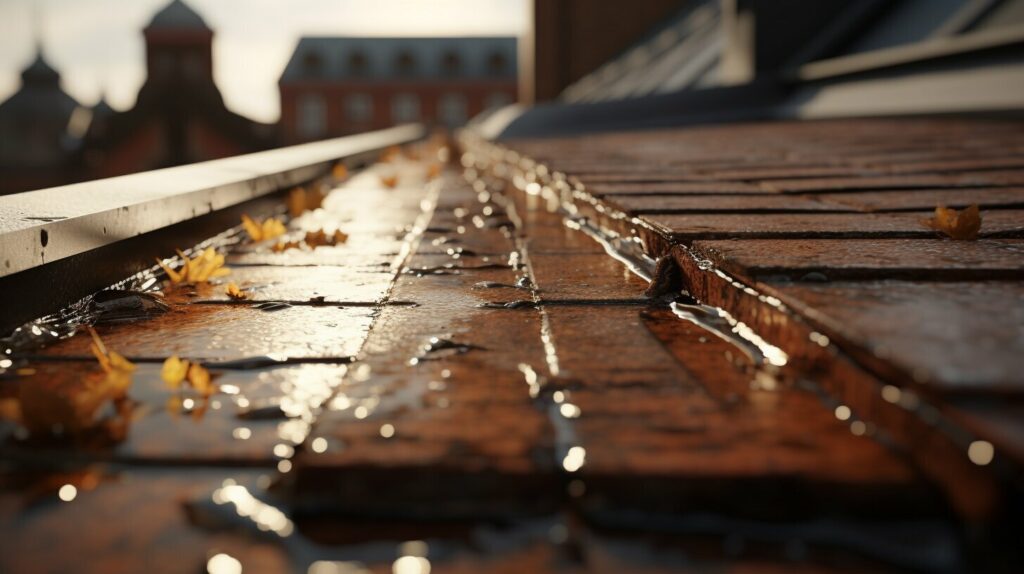
The Vulnerable Areas of Your Roof
Understanding the vulnerable areas of your roof is essential for proper roof maintenance. By knowing where leaks are most likely to occur, you can take proactive measures to avoid them. Here are the areas you should pay particular attention to:
Valleys
Valleys are the areas where two roof planes intersect. They are particularly vulnerable to leaks because they collect water and debris, which can eventually cause damage to the shingles and underlayment. To prevent leaks in valleys, make sure they are properly sealed and have adequate flashing. If you notice water spots or stains on your ceiling, it could be a sign of a valley leak.
Roof Edges
The edges of your roof are also susceptible to leaks, especially if they are not properly sealed. Inadequate flashing or gutter problems can cause water to penetrate the roof deck and enter your home. To prevent roof edge leaks, make sure your gutters are clear and in good working order, and ensure the flashing is correctly installed and not damaged.
Skylights
While skylights can be a beautiful addition to your home, they can also be a potential source of leaks. Improper installation or flashing problems can lead to water infiltration around the skylight. If you notice water stains or mold growth around your skylight, it’s a sign of a leak. Regularly maintaining your skylight by cleaning the glass and checking the seals can help prevent leaks.
Chimneys
Chimneys are another area of your roof that can experience leaks. The flashing around the chimney can deteriorate over time, allowing water to penetrate the roof and cause damage. To prevent chimney leaks, make sure the flashing is installed correctly and that the mortar around the chimney is in good condition. If you see water stains on your ceiling near the chimney, it’s a sign of a leak.
Regular roof maintenance, including inspecting these vulnerable areas, can help you identify signs of potential leaks early on and prevent costly damage to your home. Keep an eye out for water stains, mold growth, and other signs of roof leaks, and address them promptly to ensure your roof remains in good condition.
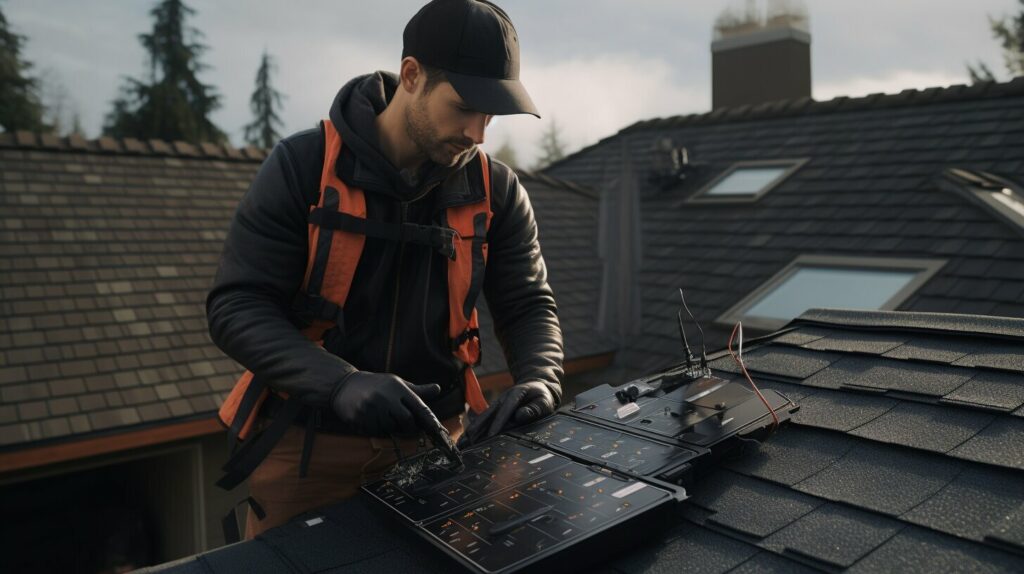
Valleys: A Common Source of Roof Leaks
If you’re experiencing a roof leak, the valleys of your roof may be the culprit. Valleys are the areas where two sloping roof surfaces meet, creating a V-shape. They are designed to channel water off your roof and into your gutters.
However, valleys are also particularly vulnerable to leaks. Because of the angle of the V-shape, water can accumulate and sit in the valley, increasing the risk of water penetration. If not addressed promptly, valley leaks can cause significant damage to your roof and home.
Common causes of valley leaks include damaged or missing shingles, improper installation or maintenance, and debris buildup. To prevent leaks, it’s important to keep valleys clear of leaves, branches, and other debris that can trap moisture and accelerate deterioration.
| Tip: | If you’re unsure about the condition of your valleys, have your roof inspected by a professional. They can identify potential issues and recommend repair or replacement if necessary. |
|---|
If you suspect a leak in your valleys, there are a few steps you can take to detect and repair the issue. Look for signs of water damage such as water stains on your ceiling or walls, and check your attic for moisture or mold growth.
To repair valley leaks, it’s important to identify the source of the problem. This may involve removing damaged shingles, cleaning debris, or repairing flashing. Depending on the severity of the leak, it may be best to hire a professional roofer to make the necessary repairs.
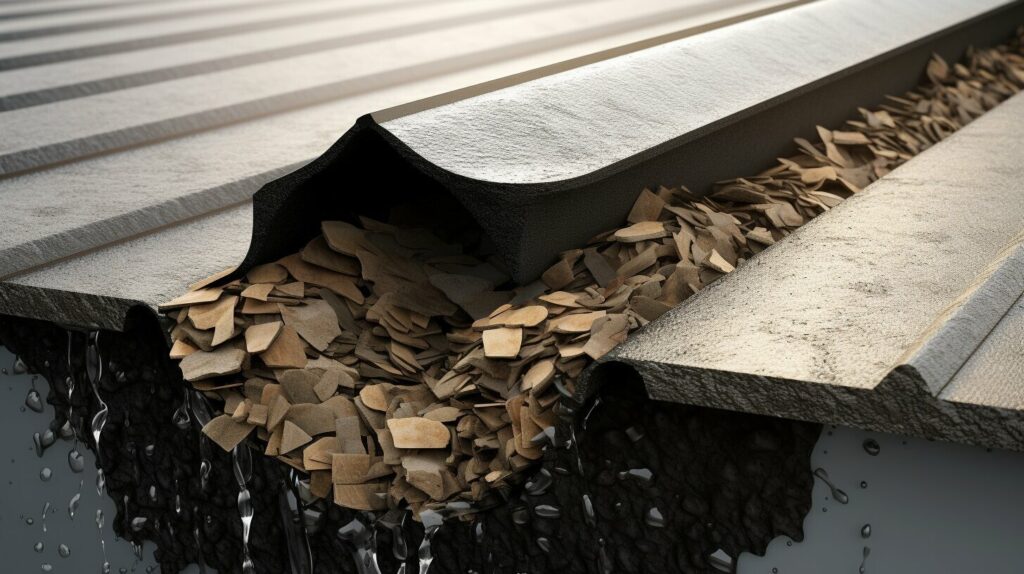
Ensuring your valleys are in good condition is a key aspect of roof maintenance and can help prevent costly roof leak repair. By addressing valley issues promptly and relying on professional help when necessary, you can keep your roof in excellent shape and protect your home from water damage.
Roof Edges: Protecting Your Home from Leaks
When it comes to your roof, the edges are some of the most important areas to protect from leaks. Properly maintaining your roof edges is crucial in preventing water from seeping into your home and causing damage. Here’s what you need to know about roof edge maintenance, roof leak prevention, and roof maintenance.

Protecting Your Gutters
One of the most important aspects of roof edge maintenance is protecting your gutters. When gutters become clogged with debris, water can overflow and seep into your roof edge, causing damage. Regular gutter cleaning is essential to ensure proper water drainage, and gutter guards can help prevent debris buildup.
Preventing Ice Dams
Ice dams are another common cause of roof leaks. They occur when snow and ice build up on your roof and prevent proper drainage. This can lead to water seeping into your roof edge, causing damage. To prevent ice dams, make sure your attic is properly insulated and ventilated and consider installing heating cables to melt snow and ice.
Proper Flashing Installation
Proper installation of flashing around your roof edge is crucial in preventing leaks. Flashing is a metal strip that seals the area where the roof edge meets the wall or chimney. Over time, flashing can become damaged or deteriorate, leading to water infiltration. Regular roof inspections can help identify flashing issues before they cause damage.
Regular Roof Maintenance
Regular roof maintenance is essential in protecting your home from leaks. This includes checking for missing or damaged shingles, addressing any issues with your roof edge, and inspecting your attic for signs of water infiltration. By staying on top of roof maintenance, you can catch potential issues early and prevent costly repairs.
Don’t let roof leaks damage your home. By properly maintaining your roof edges and addressing roof issues promptly, you can protect your home from water damage and ensure your roof lasts for years to come.
Skylights: Potential Leaky Areas
Skylights are a beautiful addition to any home that can bring in natural light and enhance the overall aesthetic appeal. However, they can also be a potential source of roof leaks if not installed or maintained properly. That is why it is essential to understand the common causes of skylight leaks and how to address them.
Signs of Skylight Leaks: The first step in preventing skylight leaks is to identify the early warning signs. Unexplained dripping, moisture around the skylight, and water stains on the ceiling are all sure signs of a leaky skylight and should not be ignored.
Repairing a Leaky Skylight: If you notice signs of a leak, it is essential to act quickly to avoid costly damages. If the leak is small, you may be able to repair it yourself by replacing the flashing or sealing the affected area. However, if the leak is significant, it is best to contact a professional and have them assess the situation.
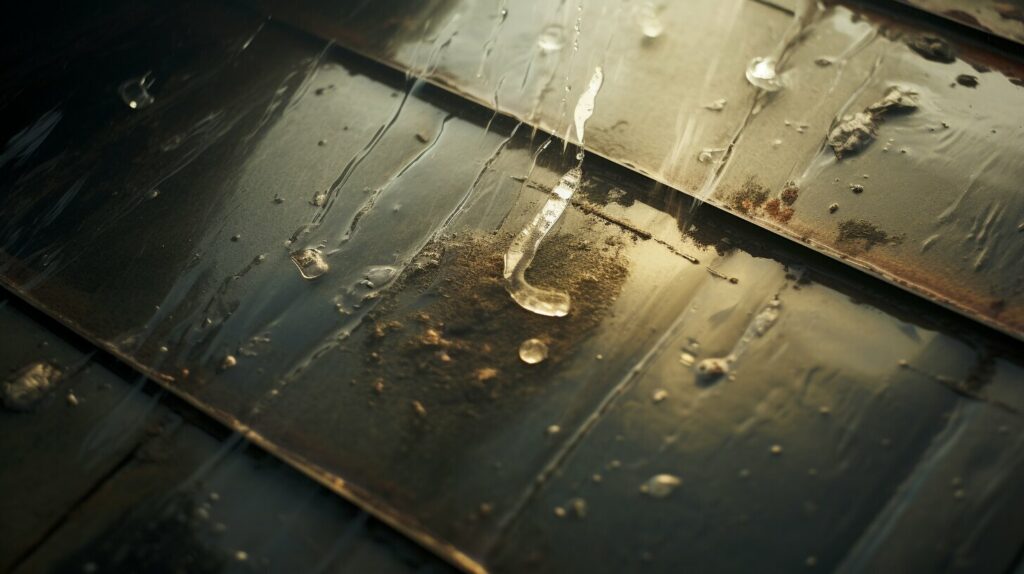
Regular Maintenance: Regular maintenance is key to preventing skylight leaks. Inspect your skylights every six months for signs of damage, such as cracks or loose seals. Clear any debris that has accumulated on or around the skylight and ensure that the flashing is in good condition.
By understanding the vulnerabilities of skylights and addressing them promptly, you can avoid the inconvenience and expense of a leaky skylight. Regular maintenance and timely repairs will help keep your home safe and dry.
Chimneys: Prone to Roof Leaks
If you have a chimney on your roof, you should be aware that it is one of the most common areas for leaks to occur. Chimneys present unique challenges that can make them prone to water infiltration, including flashing problems and deteriorating mortar.
Flashing is the material used to seal the gap between the chimney and the roof. Over time, flashing can become loose or damaged, allowing water to enter your home. Additionally, mortar that holds the chimney together can degrade due to exposure to the elements, increasing the risk of leaks.
To detect chimney leaks, look for water stains on the ceiling near the chimney or on the walls around the fireplace. You may also notice a musty smell or mold growth in the area. If you suspect a leak, it is essential to address it promptly to prevent further damage to your home.
The best way to prevent chimney leaks is to make sure your chimney is properly maintained. Regular chimney inspections can identify potential issues before they become major problems. Additionally, keep an eye on the condition of the flashing and mortar around your chimney, and replace or repair any damaged areas as soon as possible.
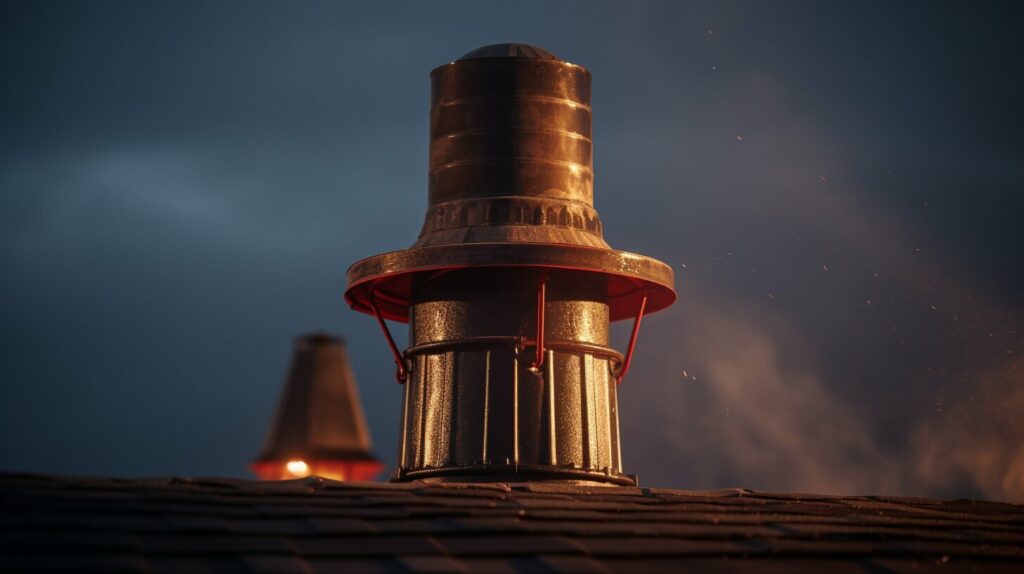
If you are unsure about the condition of your chimney or suspect a leak, it is best to consult with a professional roofing contractor or chimney specialist. They can provide expert advice on repairs or replacements that may be necessary to prevent further damage and keep your home safe and dry.
Preventative Measures for Roof Leak Prevention
Preventing roof leaks is easier than dealing with the aftermath. Regular roof maintenance is key to avoiding costly repairs. You can take several preventative measures to reduce the risk of roof leaks.
Regular Roof Inspections
Schedule regular roof inspections at least twice a year, once in the spring and once in the fall. A professional inspector can identify issues that may lead to leaks, such as damaged shingles, flashing problems, and clogged gutters. Promptly addressing these issues can prevent water penetration.
Keep Gutters Clean
Clogged gutters can cause water to accumulate on the roof and lead to leaks. Clean gutters at least twice a year to prevent debris and leaves from obstructing water flow. Consider installing gutter guards or covers to prevent debris buildup.
Address Common Causes of Roof Leaks
Common causes of roof leaks, such as damaged or missing shingles, improper installation, and flashing issues, should be addressed promptly. Regular roof maintenance can help detect and correct these issues before they cause water penetration. Additionally, proper ventilation can help prevent moisture buildup and reduce the risk of leaks.
Professional Roof Maintenance
Consider hiring a professional roofing contractor for regular roof maintenance and repair. Professionals have the tools and expertise to identify and correct potential issues before they turn into major problems. They can also provide guidance on proper ventilation and insulation to prevent leaks.
Conclusion
Preventing roof leaks is essential to keep your home safe and dry. Implementing these preventative measures, such as regular inspections, keeping gutters clean, addressing common causes of leaks, and seeking professional maintenance, can help reduce the risk of water penetration and costly repairs.
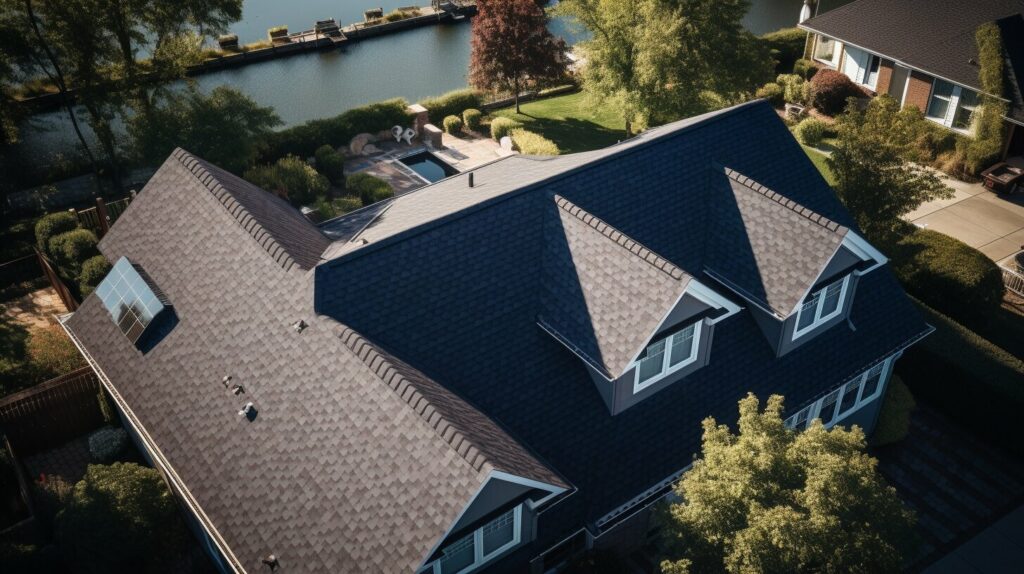
Detecting and Repairing Roof Leaks
If you suspect a roof leak, it’s important to act quickly to prevent further damage to your home. The longer you wait, the more extensive the damage and the more costly the repair. Here are some tips on how to detect and repair roof leaks:
Signs of a Roof Leak
The first step to detecting a roof leak is to look for signs of water damage. This can include water stains on your ceiling or walls, peeling paint, or mold and mildew growth. From the inside, you can also check your attic for signs of leaks, such as water stains or a damp smell.
Locating the Source of the Leak
Once you’ve identified the general area of the leak, the next step is to locate the exact source. This can be tricky, as the water may be entering your home at a different point than where the water stain or damage is located. One way to do this is to use a hose to simulate rain and move it around the roof until you see water entering your home. Alternatively, you can hire a professional roof inspector or contractor to locate the source for you.
DIY Repairs vs Professional Repairs
While some minor roof leaks can be repaired by a DIYer, it’s generally recommended to hire a professional for larger or more complex leaks. A professional will have the expertise and tools to safely and effectively repair the leak, ensuring that it doesn’t happen again in the future. Additionally, attempting to repair a roof leak without the proper training and equipment can be dangerous.
However, if you do decide to attempt a DIY repair, be sure to follow all safety guidelines and use the proper materials for your specific roof type. Depending on the cause of the leak, you may need to replace damaged shingles or flashing, seal cracks or gaps with roof sealant, or apply a waterproofing membrane to the affected area.
When to Call a Professional
If you’re not comfortable with DIY repairs or if the leak is extensive, it’s best to call a professional roofing contractor. They can assess the damage, locate the source of the leak, and provide a thorough repair with a warranty. Additionally, a professional can provide tips on how to prevent future leaks and extend the lifespan of your roof.
By following these tips, you can effectively detect and repair roof leaks, protecting your home from further damage and expense.

Conclusion
Congratulations! You are now equipped with the knowledge you need to prevent and repair roof leaks. Remember, regular roof maintenance is crucial to protect your home from potential damages caused by leaks. By understanding the vulnerable areas of your roof and implementing preventative measures such as gutter maintenance and prompt repairs, you can save yourself from costly repairs in the long run.
Don’t ignore signs of roof leaks such as water stains or mold growth as they can quickly lead to significant water damage. Instead, take the necessary steps to identify the source of the leak and address it promptly, either through DIY repair or by hiring a professional.
Investing in your roof maintenance is investing in the future of your home. Don’t let roof leaks catch you off guard; take control of your roof’s health today!
FAQ
Q: What are the common causes of roof leaks?
A: Common causes of roof leaks include damaged or missing shingles, faulty flashing, and improper installation.
Q: Which areas of the roof are most vulnerable to leaks?
A: Areas such as valleys, roof edges, skylights, and chimneys are most prone to leaks.
Q: How can I repair and detect leaks in valley areas?
A: It is important to properly repair and detect leaks in valley areas to prevent further damage. Consult a professional for assistance.
Q: How can I protect my home from leaks at the roof edges?
A: Regular roof maintenance and addressing issues like gutter problems, ice dams, and inadequate flashing can help protect your home from roof leaks.
Q: What makes skylights vulnerable to leaks?
A: Skylights can be susceptible to leaks due to factors like improper installation and flashing issues.
Q: How can I prevent leaks from chimneys?
A: Proper chimney maintenance and repair, including addressing flashing problems and deteriorating mortar, can help prevent leaks.
Q: What preventative measures can I take to prevent roof leaks?
A: Regular roof inspections, gutter maintenance, and prompt repairs are important preventative measures to reduce the risk of roof leaks.
Q: How do I detect and repair roof leaks?
A: Look out for signs such as water stains and mold growth to detect roof leaks. Consider hiring professionals for repairs or consult a DIY guide if you feel confident.